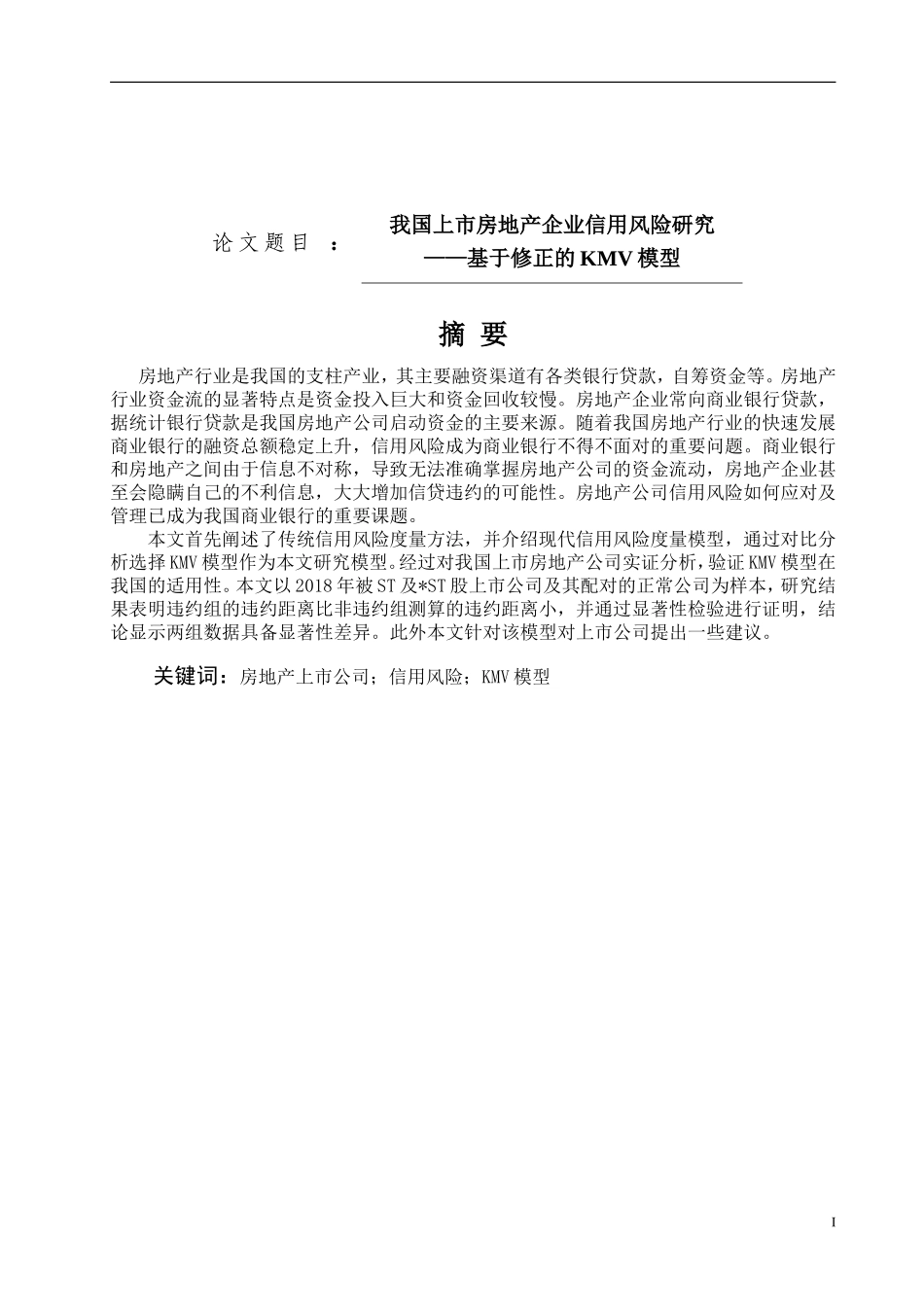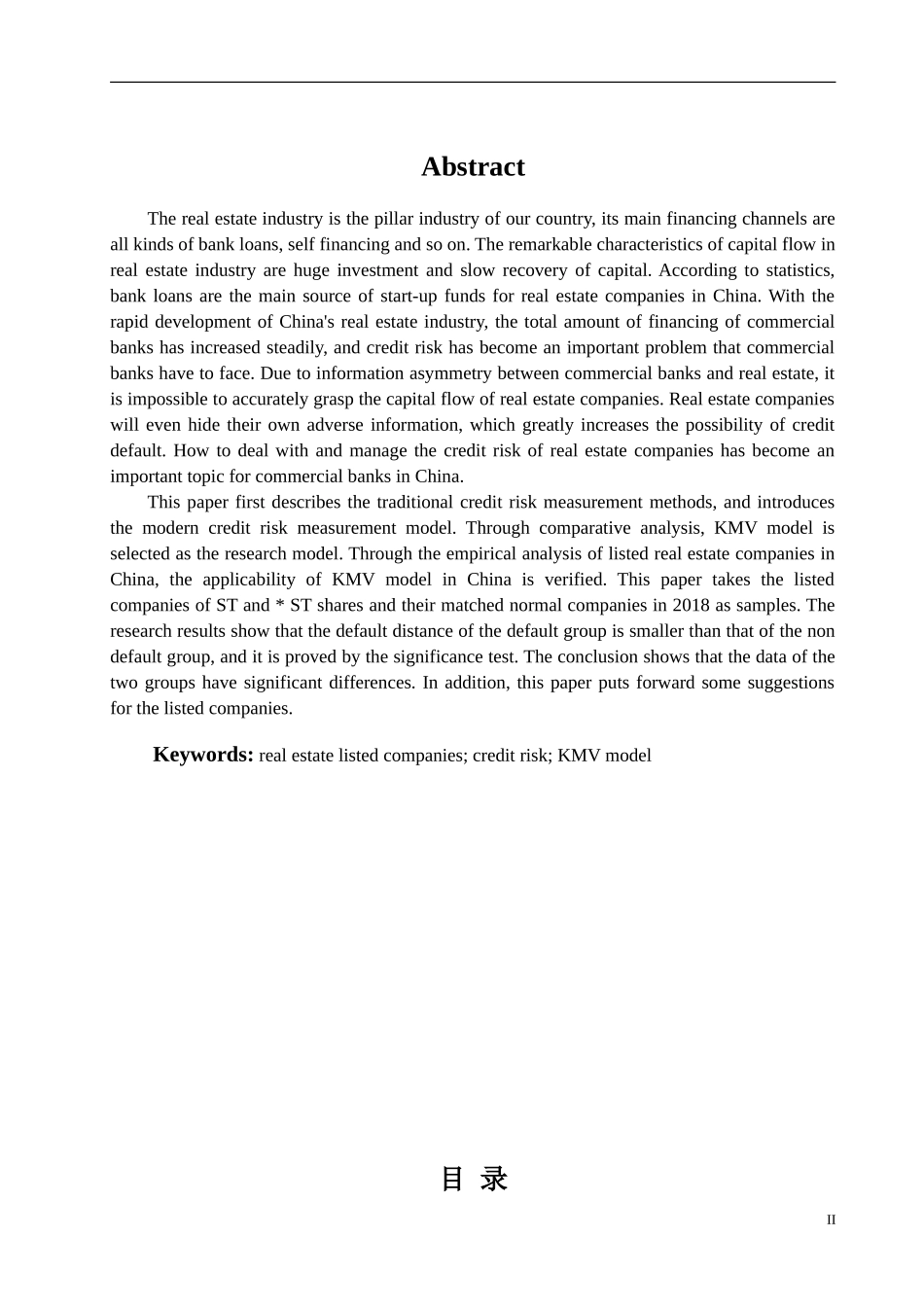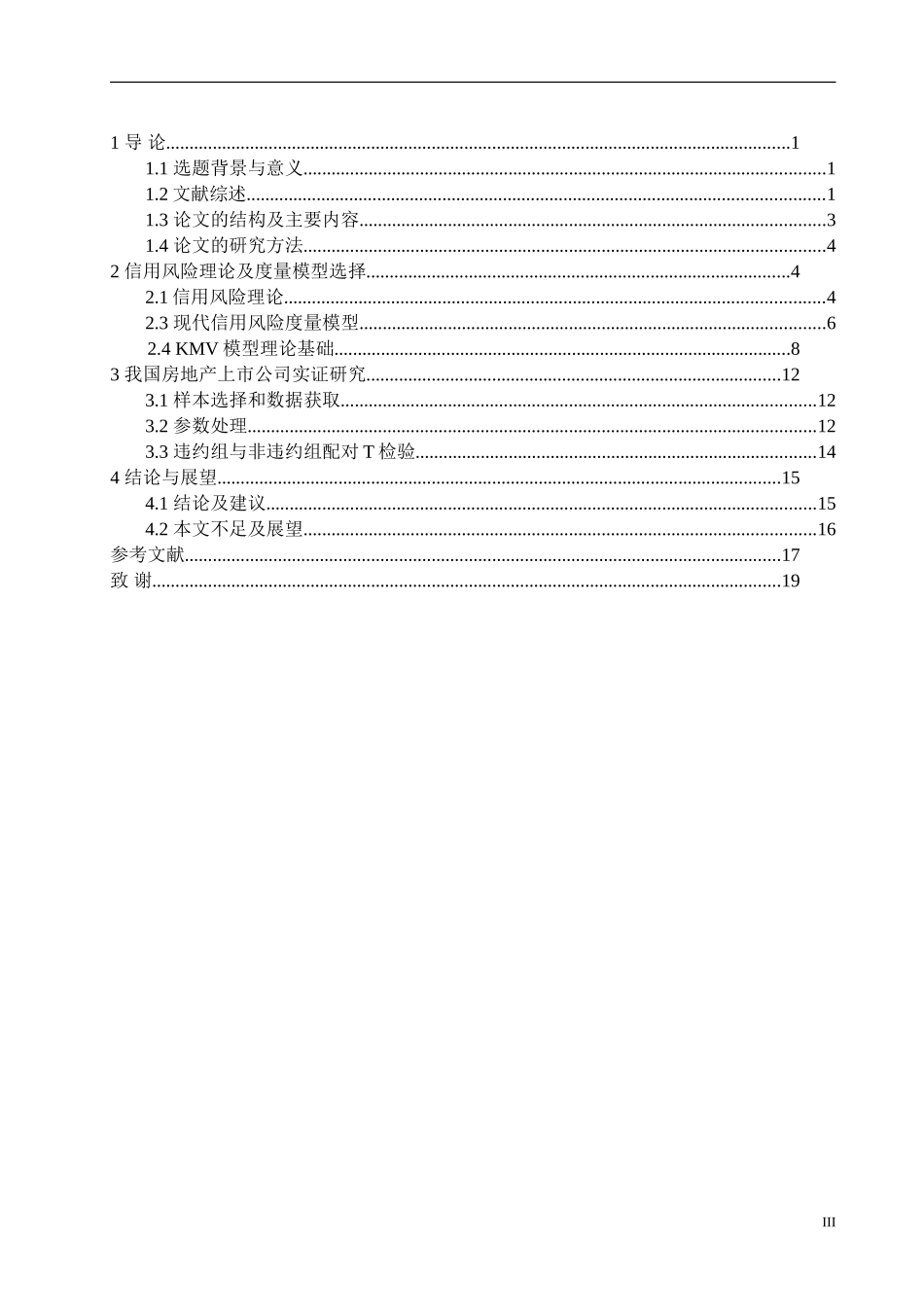I论 文 题 目:我国上市房地产企业信用风险研究——基于修正的 KMV 模型摘 要房地产行业是我国的支柱产业,其主要融资渠道有各类银行贷款,自筹资金等。房地产行业资金流的显著特点是资金投入巨大和资金回收较慢。房地产企业常向商业银行贷款,据统计银行贷款是我国房地产公司启动资金的主要来源。随着我国房地产行业的快速发展商业银行的融资总额稳定上升,信用风险成为商业银行不得不面对的重要问题。商业银行和房地产之间由于信息不对称,导致无法准确掌握房地产公司的资金流动,房地产企业甚至会隐瞒自己的不利信息,大大增加信贷违约的可能性。房地产公司信用风险如何应对及管理已成为我国商业银行的重要课题。本文首先阐述了传统信用风险度量方法,并介绍现代信用风险度量模型,通过对比分析选择 KMV 模型作为本文研究模型。经过对我国上市房地产公司实证分析,验证 KMV 模型在我国的适用性。本文以 2018 年被 ST 及*ST 股上市公司及其配对的正常公司为样本,研究结果表明违约组的违约距离比非违约组测算的违约距离小,并通过显著性检验进行证明,结论显示两组数据具备显著性差异。此外本文针对该模型对上市公司提出一些建议。关键词:房地产上市公司;信用风险;KMV 模型IIAbstractThe real estate industry is the pillar industry of our country, its main financing channels are all kinds of bank loans, self financing and so on. The remarkable characteristics of capital flow in real estate industry are huge investment and slow recovery of capital. According to statistics, bank loans are the main source of start-up funds for real estate companies in China. With the rapid development of China's real estate industry, the total amount of financing of commercial banks has increased steadily, and credit risk has become an important problem that commercial banks have to face. Due to information asymmetry between commercial banks and real estate, it is impossible to accurately grasp the capital flow of real estate companies. Real estate companies will even hide their own adverse information, which greatly increases...












